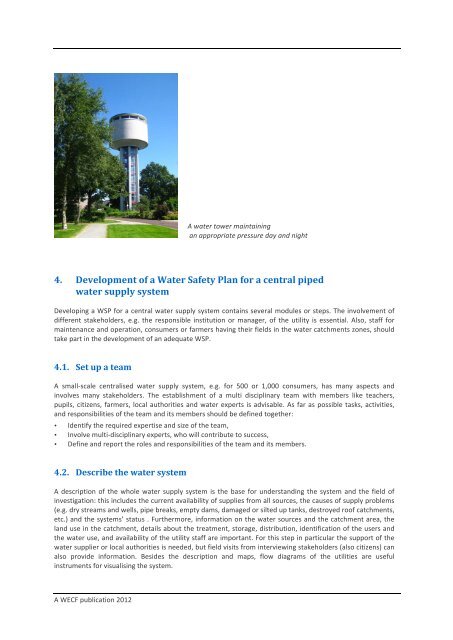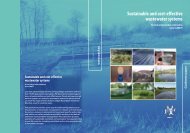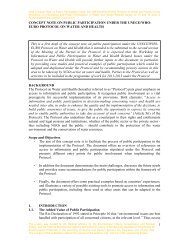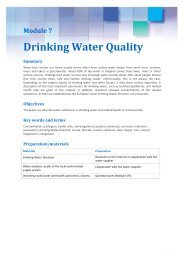Local Action for Safe Water - WECF
Local Action for Safe Water - WECF
Local Action for Safe Water - WECF
You also want an ePaper? Increase the reach of your titles
YUMPU automatically turns print PDFs into web optimized ePapers that Google loves.
A <strong>WECF</strong> publication 2012<br />
A water tower maintaining<br />
an appropriate pressure day and night<br />
4. Development of a <strong>Water</strong> <strong>Safe</strong>ty Plan <strong>for</strong> a central piped<br />
water supply system<br />
Developing a WSP <strong>for</strong> a central water supply system contains several modules or steps. The involvement of<br />
different stakeholders, e.g. the responsible institution or manager, of the utility is essential. Also, staff <strong>for</strong><br />
maintenance and operation, consumers or farmers having their fields in the water catchments zones, should<br />
take part in the development of an adequate WSP.<br />
4.1. Set up a team<br />
A small-‐scale centralised water supply system, e.g. <strong>for</strong> 500 or 1,000 consumers, has many aspects and<br />
involves many stakeholders. The establishment of a multi disciplinary team with members like teachers,<br />
pupils, citizens, farmers, local authorities and water experts is advisable. As far as possible tasks, activities,<br />
and responsibilities of the team and its members should be defined together:<br />
• Identify the required expertise and size of the team,<br />
• Involve multi-‐disciplinary experts, who will contribute to success,<br />
• Define and report the roles and responsibilities of the team and its members.<br />
4.2. Describe the water system<br />
A description of the whole water supply system is the base <strong>for</strong> understanding the system and the field of<br />
investigation: this includes the current availability of supplies from all sources, the causes of supply problems<br />
(e.g. dry streams and wells, pipe breaks, empty dams, damaged or silted up tanks, destroyed roof catchments,<br />
etc.) and the systems’ status . Furthermore, in<strong>for</strong>mation on the water sources and the catchment area, the<br />
land use in the catchment, details about the treatment, storage, distribution, identification of the users and<br />
the water use, and availability of the utility staff are important. For this step in particular the support of the<br />
water supplier or local authorities is needed, but field visits from interviewing stakeholders (also citizens) can<br />
also provide in<strong>for</strong>mation. Besides the description and maps, flow diagrams of the utilities are useful<br />
instruments <strong>for</strong> visualising the system.

















